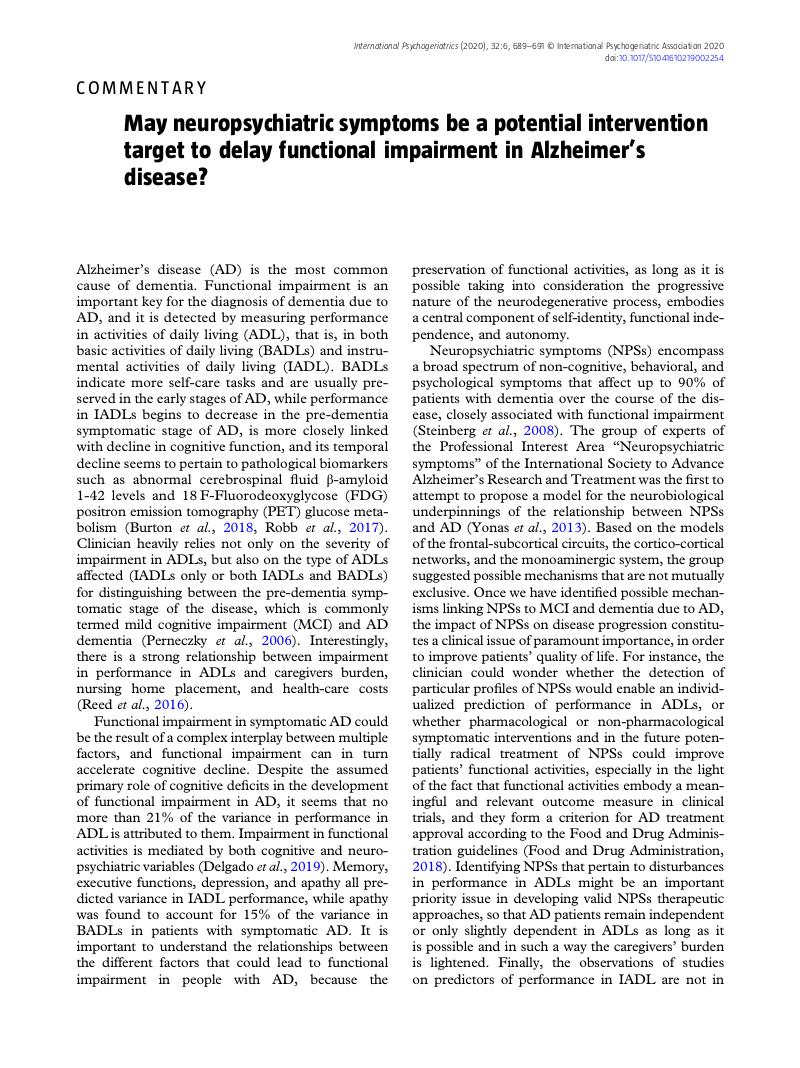Crossref Citations
This article has been cited by the following publications. This list is generated based on data provided by Crossref.
Alexopoulos, Panagiotis
Skondra, Maria
Kontogianni, Evagellia
Vratsista, Aikaterini
Frounta, Maria
Konstantopoulou, Georgia
Aligianni, Suzana Ioanna
Charalampopoulou, Marina
Lentzari, Iliana
Gourzis, Philippos
Kliegel, Matthias
Economou, Polychronis
and
Politis, Antonios
2021.
Validation of the Cognitive Telephone Screening Instruments COGTEL and COGTEL+ in Identifying Clinically Diagnosed Neurocognitive Disorder Due to Alzheimer’s Disease in a Naturalistic Clinical Setting.
Journal of Alzheimer's Disease,
Vol. 83,
Issue. 1,
p.
259.
Alexopoulos, Panagiotis
Soldatos, Rigas
Kontogianni, Evangelia
Frouda, Maria
loanna Aligianni, Souzana
Skondra, Maria
Passa, Maria
Konstantopoulou, Georgia
Stamouli, Evangelia
Katirtzoglou, Evgenia
Politis, Anastasios
Economou, Polychronis
Alexaki, Maria
Siarkos, Kostas
and
Politis, Antonios
2021.
COVID-19 Crisis Effects on Caregiver Distress in Neurocognitive Disorder.
Journal of Alzheimer's Disease,
Vol. 79,
Issue. 1,
p.
459.
Lipton, Richard B
Podger, Lauren
Stewart, Walter F
Gomez-Ulloa, David
Rodriguez, Wilton I
Runken, M Chris
Barnes, Frederick B
and
Serrano, Daniel
2022.
Toward the optimized assessment of clinical outcomes in studies of novel treatments for Alzheimer’s disease.
Expert Review of Neurotherapeutics,
Vol. 22,
Issue. 10,
p.
863.
He, Chaoqun
Kong, Xiangyi
Li, Jinhui
Wang, Xingyi
Chen, Xinqiao
Wang, Yuanyi
Zhao, Qing
and
Tao, Qian
2023.
Predictors for quality of life in older adults: network analysis on cognitive and neuropsychiatric symptoms.
BMC Geriatrics,
Vol. 23,
Issue. 1,
Davodi-Boroujerdi, Ghazal
Khayyat Naghadehi, Ayda
Nazari-Serenjeh, Farzaneh
Alijanpour, Sakineh
Ghasemzadeh, Zahra
and
Rastqar, Ali
2024.
Protective Roles of Melatonin in Alzheimer's Disease: A Review of Experimental and Clinical Research.
Jentashapir Journal of Cellular and Molecular Biology,
Vol. 15,
Issue. 1,



